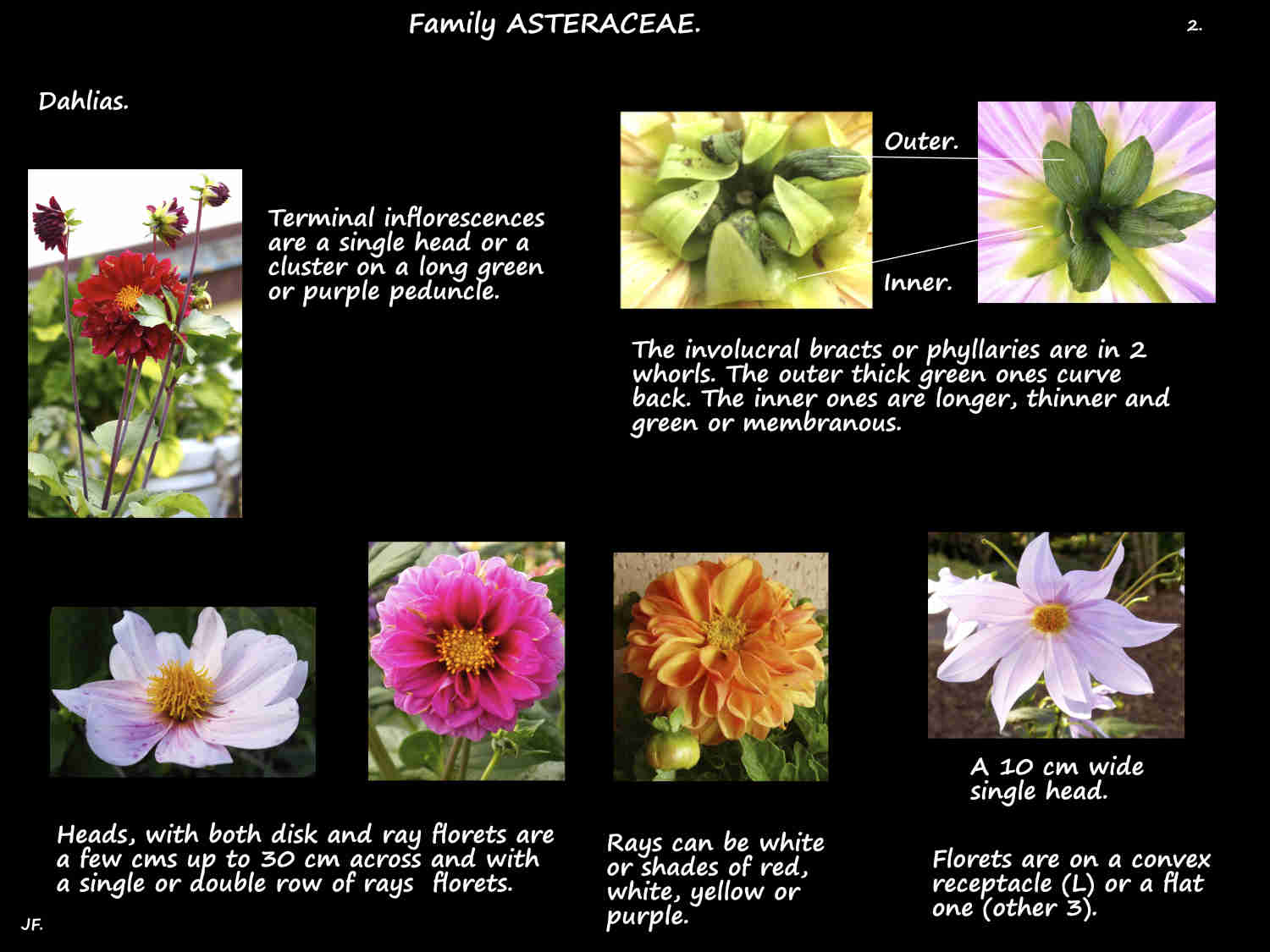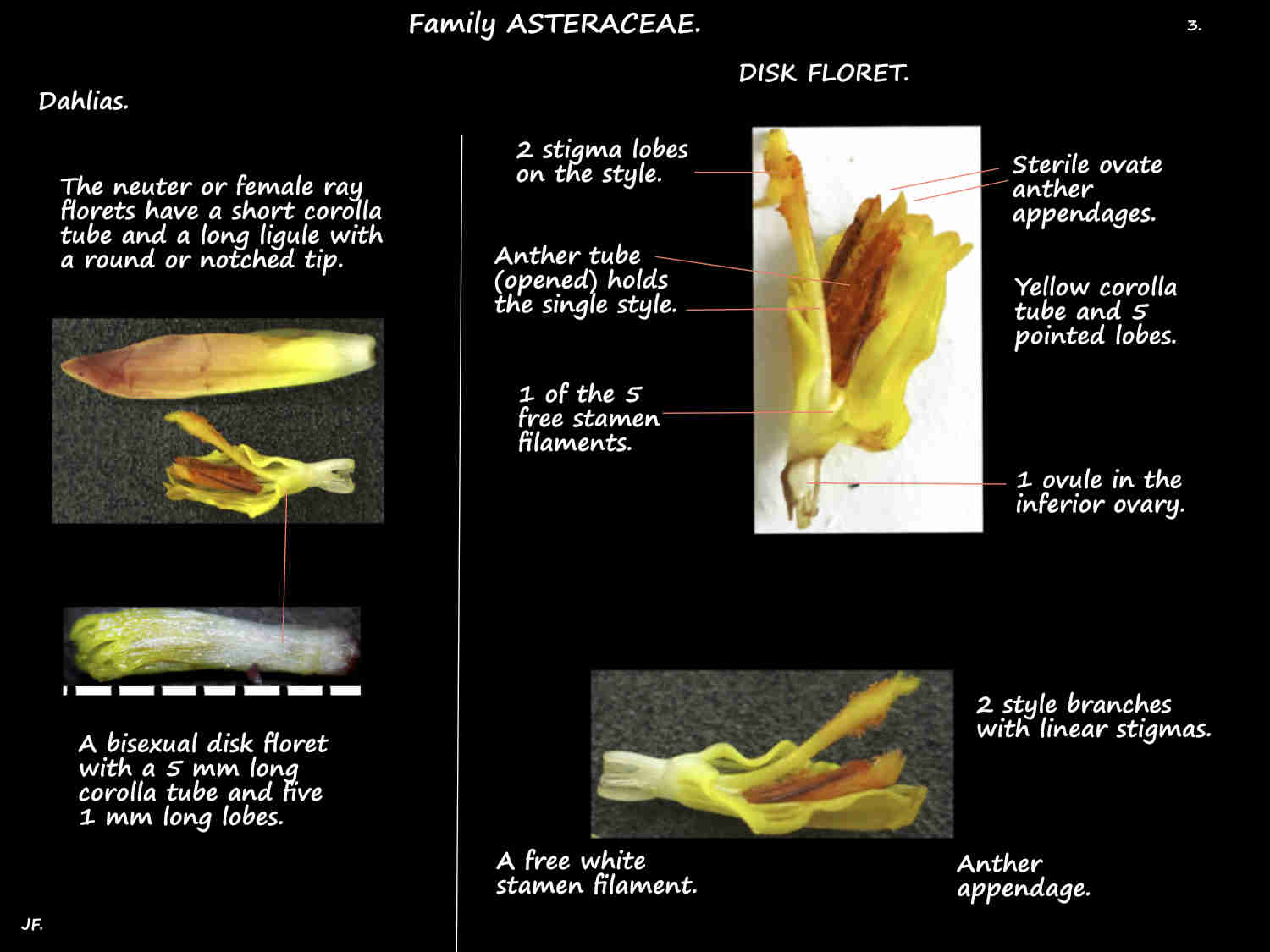Dahlia.
Family Asteraceae > Subfamily Asteroideae > Tribe Coreopsideae.
There are now 41 or 42 species of dahlias and new ones are still being added.
Mostly native to Mexico and Central America their cultivars are commonly seen in cultivation.
Most are perennial herbs with soft stems and roots with large tubers.
Some are shrubs or small trees up to 4 m high with stems that become woody.
The erect branching stems have leaves that are opposite or in whorls of three.
Leaves, on petioles can be simple or once, twice or 3 times divided (pinnate, bi- or tri-pinnate).
There are teeth on the edges and sometimes simple hairs mainly underneath.
Terminal inflorescences, on a peduncle can be a solitary flower head or a cluster.
Heads, up to 30 cm across have both ray and disk florets.
At the base of the head are 2 rows of free involucral bracts or phyllaries of different sizes.
The thick green bracts in the outer whorl curve outwards.
The longer wider inner ones can be green or thin and dry.
The florets are on a flat or convex receptacle that has scales or paleae on it.
The thin membranous paleae have a blunt tip.
There is a single or double row of ray florets around the edge of the head.
The corolla consists of a short tube with a longer ligule that may be notched.
Rays are female or neuter.
They can be white or shades of yellow, red and purple with longitudinal veins.
The commonly yellow or purple disk florets have a corolla tube with 5 small lobes.
They are bisexual but a few species have a few male florets as well.
The anthers of the 5 stamens are fused into a tube and each usually has a free appendage at the top.
The inferior ovary has one locule with a single ovule.
After passing through the anther tube the single style branches into 2 stigmatic lobes.
The fruit are narrow laterally compressed cypselae commonly called achenes.
They typically have no pappus but occasional ones have 2 rudimentary teeth or bristles.
There are 2 naturalised species in Australia.
Dahlia imperialis are shrubs up to 4 m high with flower heads up to 10 cm across and
D. x pinnata are herbs up to 1.5 m high and heads up to 2 cm across.
J.F.





